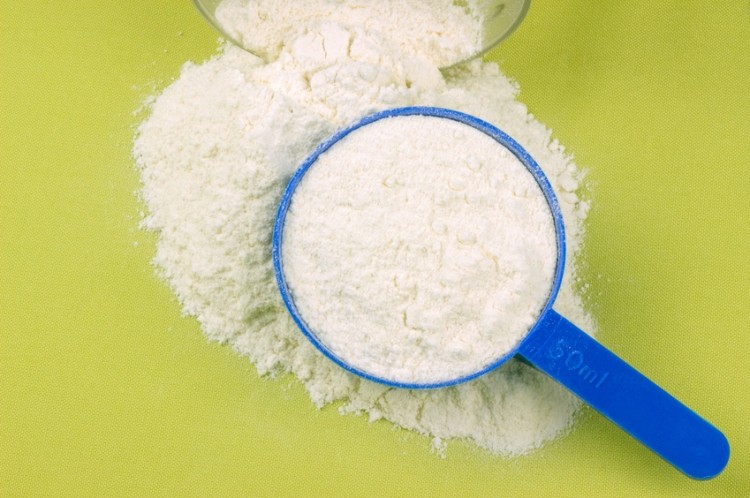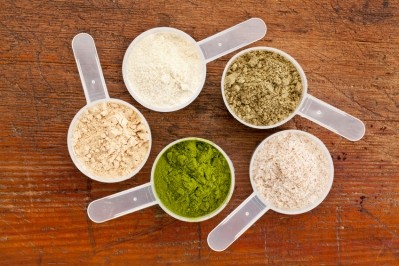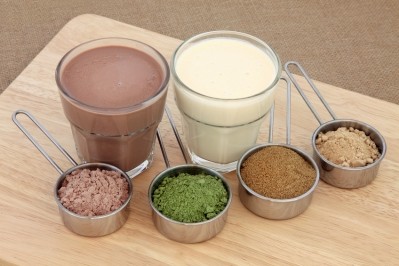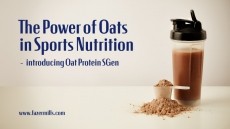Special Edition: Sports Nutrition
Whey's the best for targeted benefits; for general fortification not so much

Protein choice must be driven by the goal of the consumer, experts contacted by NutraIngredients-USA said. Are they seeking weight management or satiety benefits? Are they trying increase power or performance? But data can drive that decision, too, depending on the targeted benefits sought.
Whey rules the roost for performance benefits
“What’s the goal of the consumer? That’s what I always start with,” Susan Kleiner, PhD said. Kleiner is a practicing nutritionist with a number of athletic female clients and who at one time was also developing her own women-focused sports nutrition brand.
“If the goal of the consumer bar none is performance, then it’s whey protein. There is no other protein with data behind it that outperforms whey in any meaningful statistical sense,” she said.
Chris Lockwood, who has a PhD in exercise physiology, agreed with Kleiner’s assessment. Lockwood is a principal in the consulting firm AP Nutrition who at one time was also an editor at bodybuilding.com and a manager of the diet category at GNC.
“When I get asked this question by consumers about what they should use if they’re on a budget, when you look at the cost to benefit ratio, I always answer whey,” Lockwood said.
Lockwood said he goes back to the beginning when looking at what supports muscle growth the best. The time of life when humans put on the most muscle with the most rapidity is during the first two years of life. Infants in the Western world typically triple their birth weight by the end of the first year, and increase at least 50% in length/height. This growth curve usually starts to flatten out somewhere in the second year, and stays on a gradual slope until puberty. The food that was designed by nature so to speak to support this spectacular initial weight gain is breast milk.
“It’s common sense if you look at what is present in breast milk. About 92% of the proteins in early breast milk is whey. Even at late lactation, after two years, you are still at about 55% to 65% whey,” Lockwood said.
Kleiner said that consumer preference still trumps data when it comes to protein choice. She said she believes this is what drives the rise of all the plant protein alternatives. There are solid reasons for choosing these proteins when it comes to questions of sustainability, land use, cruelty issues and so forth. But is that choice driven by data? Not so much.
“If the goal of the customer is to be vegan, even if performance matters they will choose the vegan option no matter how thinly researched or poor tasting,” she said. “I think there are some better amino acid profiles available now among the plant based proteins. But there is not a lot of data. What’s driving that choice is not data, it’s a philosophy.”
Kleiner said that there is much less research to support the function of protein as a dietary ingredient than many other ingredients that form the basis of supplement categories, such as polyphenols. This is especially true, she said, in the sports nutrition category, where word of mouth has been such a powerful marketing mode in the past—that and celebrity athlete endorsements.
“People do more research when they buy a refrigerator. They’re looking at Consumer Reports and other things. But when it comes to what they put into their bodies, they do nothing except talk to the other guy at the gym,” she said.
“It’s all about lean body mass outcomes. Under controlled circumstances with a proper training routine there is a statistically significant benefit to using whey over plants,” she said.
Whey benefits overstated?
Jose Antonio, PhD, co founder of the International Society of Sports Nutrition and a professor at Nova Southeastern University in Florida, said that what Kleiner and Lockwood had to say about whey is true, but that it’s easy to overstate the benefits of that protein source over another. It’s not akin to the situation with botanicals, where it might not be possible through the diet to get an efficacious dose of a given proanthocyanin, to use one example. In that case, you’d have to go to the supplement that contains that ingredient to get those benefits. With proteins, the differences among them and their relative benefits vis a vis one another are not so clear cut, he said.
“People are starting to see the value of eating a lot more protein than the RDA (the IOM recommendation at the moment is 0.8 g/kg of body weight). I’ve done some investigations where going up to even 3 grams per kilogram has some benefit,” Antonio said.
“It’s probably true that whey protein is superior to other sources if you do it on a gram for gram basis. But the easy way around that is just to consume more of the other proteins, such as pea and rice proteins,” he said.
Deconstructing the deconstructed proteins
Antonio said he’s also similarly unmoved by the arguments made by the suppliers of branched chain amino acids, proteins that have been deconstructed into their peptide components in an effort to provide specific targeted benefits and other similar ingredients. There are solid reasons behind the development of these ingredients, but he said all of that is easily swamped by just eating enough protein. The hammer trumps the stiletto when hitting this particular target, in his opinion, and you only need the finer instrument to meet very specific goals.
“If you look at the research, the data on these other peptides is scattered. If you eat a very high quality protein in essence you are already getting a lot of these dipeptides and tripeptides. It’s sort of like buying a car with tinted windows. Do you need that added benefit? If you’re buying the car in Oregon, maybe not. If you are buying a car in Florida, maybe you do,” he said.
For Kleiner, it comes back again to the goal of the consumer. If the protein is being consumed for a specific athletic benefit, then even these small differences do matter. For physique athletes, for example, the ratio of benefit to calories consumed might be a key metric. It could matter for endurance athletes, too, especially in sports like cycling where power to weight ratio rules over almost all other considerations.
“For an elite athlete it can make a big difference. Every tiny difference is important, because a lot of tiny differences might add up to a second and that wins you the race. For everyone else it may not be significant,” she said.















